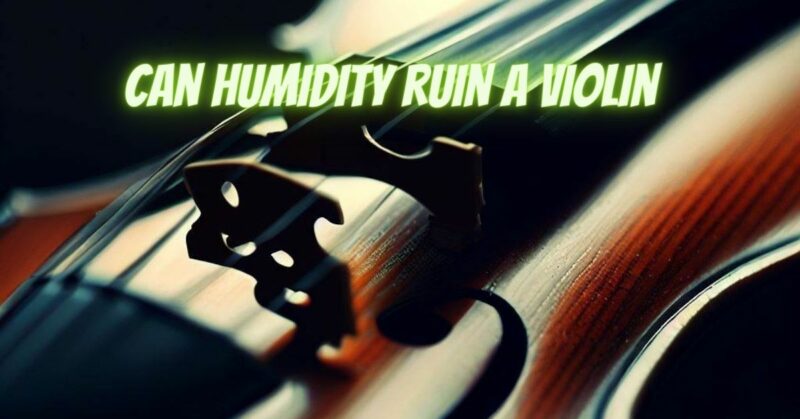Humidity is a critical factor that can significantly impact the condition and performance of musical instruments, including violins. The delicate structure and materials of a violin make it vulnerable to changes in humidity levels. In this article, we will explore the potential effects of humidity on violins and provide insights into how you can protect your instrument from damage caused by excessive or fluctuating humidity.
Understanding the Effects of Humidity on Violins:
- Wood Swelling and Shrinking:
- Humidity fluctuations can cause the wood of a violin to swell or shrink. When exposed to high humidity, the wood absorbs moisture, causing it to expand. Conversely, in low humidity conditions, the wood loses moisture, leading to shrinkage.
- Swelling and shrinking can result in structural problems, such as warping, cracks, or separations in the violin’s body, fingerboard, or seams.
- Changes in Sound and Tone:
- Humidity variations can affect the sound quality and tone of a violin. The wood’s moisture content plays a crucial role in producing rich and resonant tones. Excessive humidity can make the wood overly damp, resulting in a dull, muffled, or muted sound.
- Conversely, low humidity can cause the wood to dry out excessively, leading to a brittle, thin, or harsh sound.
- Bow Hair and Performance:
- The bow hair on a violin’s bow is susceptible to humidity changes. High humidity can cause the bow hair to absorb moisture, making it less responsive and prone to becoming sticky or sluggish.
- In low humidity conditions, the bow hair may become dry and brittle, negatively affecting its grip and ability to produce a consistent sound.
Protecting Your Violin from Humidity-Related Damage:
- Use a Humidifier and Dehumidifier:
- In regions with high humidity, use a dehumidifier in the room where you store your violin to maintain a stable humidity level.
- In areas with low humidity, consider using a humidifier or placing a humidifying device, such as a damp sponge or a specialized violin humidifier, inside the case to add moisture.
- Store the Violin Properly:
- Store your violin in a hard case that offers protection from humidity fluctuations and temperature changes.
- Avoid exposing your violin to extreme environments, such as direct sunlight, damp basements, or near heating or cooling vents.
- Monitor Humidity Levels:
- Use a hygrometer, a device that measures humidity, to monitor the humidity levels where your violin is stored.
- Maintain a relative humidity range of around 40-60% for optimal violin health.
- Seasonal Adjustments:
- Be aware of seasonal humidity changes and take appropriate measures to protect your violin. For example, during dry winter months, use a humidifier, and during humid summer months, use a dehumidifier.
- Regular Maintenance and Inspections:
- Schedule regular inspections with a professional luthier to detect any potential humidity-related issues and address them promptly.
- Keep the violin properly maintained, including regular restringing, bridge adjustments, and maintaining the correct amount of bow hair tension.
Conclusion:
Humidity can have a significant impact on the condition and performance of a violin. Understanding the potential effects of humidity on your instrument allows you to take proactive measures to protect it. By maintaining stable humidity levels, using humidifiers or dehumidifiers when necessary, storing the violin properly, and scheduling regular maintenance, you can help safeguard your violin from humidity-related damage and preserve its sound quality and longevity. Remember that consulting with a professional luthier can provide valuable guidance and support in maintaining your violin’s optimal condition.


